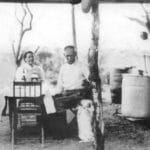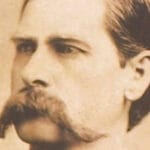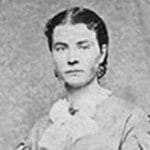Urilla Sutherland, Wyatt Earp’s first wife, remains an enigma, a whisper in the winds of the Wild West. Her story, tragically brief, is often overshadowed by the legend of her famous husband. This article seeks to illuminate her life, exploring the mysteries surrounding her death and offering a glimpse into the experiences of women in the 19th-century American West.
Urilla: A Life Shrouded in Mystery
Urilla Sutherland’s name echoes faintly through history, a life almost lost to time. More than just a footnote in Wyatt Earp’s saga, her story poignantly reflects the countless women whose lives were marginalized in the narratives of the American West. Who was this woman, briefly Wyatt Earp’s wife, then lost to the shadows? What fragments of her life can we piece together?
Early Life and Family
Born on January 10, 1849, in Ela Township, Lake County, Illinois, Urilla was the daughter of William Erwin Sutherland and Permelia Ferris. Around 1859, when Urilla was ten, the family relocated to Lamar, Missouri, a bustling frontier town filled with pioneers and fortune-seekers. What was life like for a young woman coming of age in this dynamic environment? Did she share the common dreams of love and family? Sadly, details of her upbringing remain elusive. The historical record offers no diaries, letters, or firsthand accounts to paint a vivid picture of her youth.
Even the spelling of her name—Urilla or Aurilla—is uncertain. This seemingly minor detail hints at the larger mystery surrounding her existence. Was it a clerical error, a family nickname, or something more? These unanswered questions deepen the enigma.
A Fateful Encounter
Urilla likely met Wyatt Earp in Lamar around 1869 when he was 22. The circumstances of their meeting and the nature of their courtship remain shrouded in speculation. Was it a whirlwind romance, a chance encounter that blossomed into love, or a more pragmatic arrangement, common in those times? The details, like so much else about Urilla’s life, are lost to history.
Adding to the mystery, the exact date and location of their marriage are uncertain. No marriage certificate or official record has been found to confirm the specifics. Some evidence suggests they were married by Wyatt’s father, Nicholas, in January 1870. This lack of documentation makes reconstructing their story a formidable challenge.
A Brief Union, A Lasting Impact
Urilla’s story takes a heartbreaking turn in the autumn of 1870. Pregnant with their first child, she fell gravely ill. While typhoid is often cited as the cause, the historical record is ambiguous. Typhus and cholera were also prevalent at the time, and the lack of reliable medical documentation makes a definitive diagnosis impossible. This uncertainty only adds to the tragedy.
The loss of both Urilla and her unborn child undoubtedly had a profound impact on Wyatt Earp. He rarely spoke of her in later years, a silence that speaks volumes. Was this reticence a testament to the depth of his grief, a pain too profound to articulate? Or did it reflect societal expectations of stoicism in men? It’s likely a combination of factors, including personal sorrow, societal pressures, and perhaps a desire to shield her memory from public scrutiny.
Some historians suggest that this devastating loss was a pivotal moment in Earp’s life, shaping his subsequent actions and decisions, perhaps even contributing to his involvement in the events at the O.K. Corral. While this theory is compelling, it is essential to acknowledge the complexities of human motivation and avoid oversimplifying a multifaceted historical narrative. For further legal context related to historical court proceedings, you might find information relevant to your research within the 19th Judicial District Court Baton Rouge or the 34th District Court Romulus MI 48174.
Remembering Urilla
Urilla Sutherland’s story, though tragically incomplete, is more than a mere footnote in Wyatt Earp’s biography. It represents the untold stories of countless women in the 19th-century American West whose lives were often undocumented, their contributions overlooked. By piecing together the fragments we have, we gain a glimpse into the human side of history, the lives lived beyond the legends. Urilla’s story humanizes the iconic lawman, adding depth and nuance to his persona. It reminds us that even amid hardship and obscurity, every life has value, and every story deserves to be told. Ongoing research may one day reveal more about this enigmatic figure, allowing us to paint a more complete picture of Urilla Sutherland Earp and her place in the tapestry of the American West.
- Discover Famous Doctors: Groundbreaking Advances in Medicine - April 11, 2025
- What Ended the Long Drives?Ranching’s Transformation - April 11, 2025
- How Are Islands Formed: A Comprehensive Guide to Island Genesis - April 11, 2025















